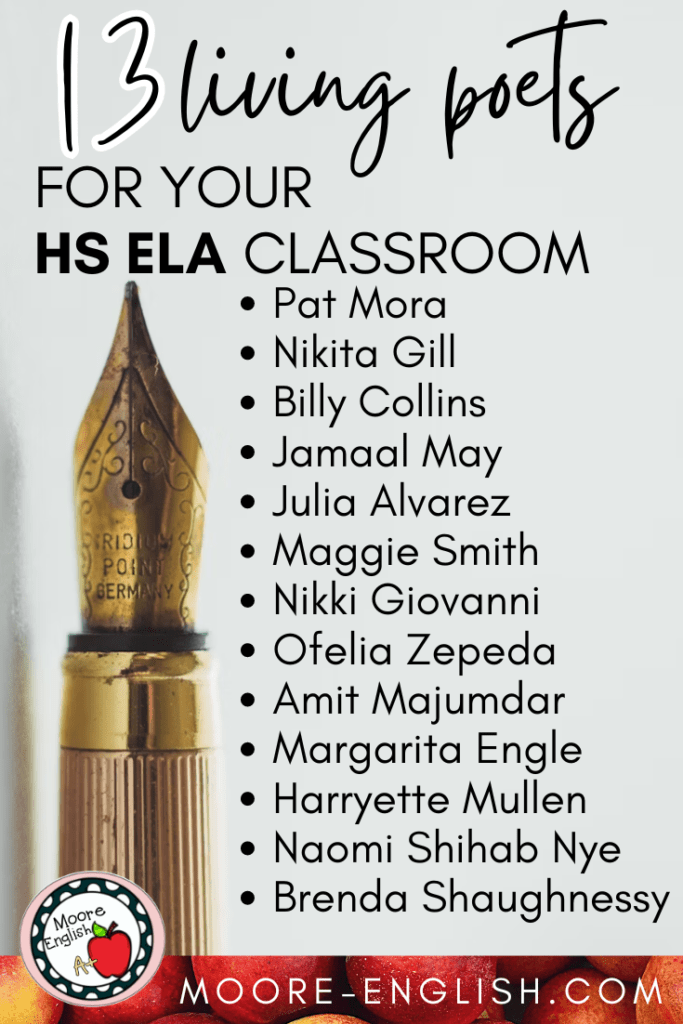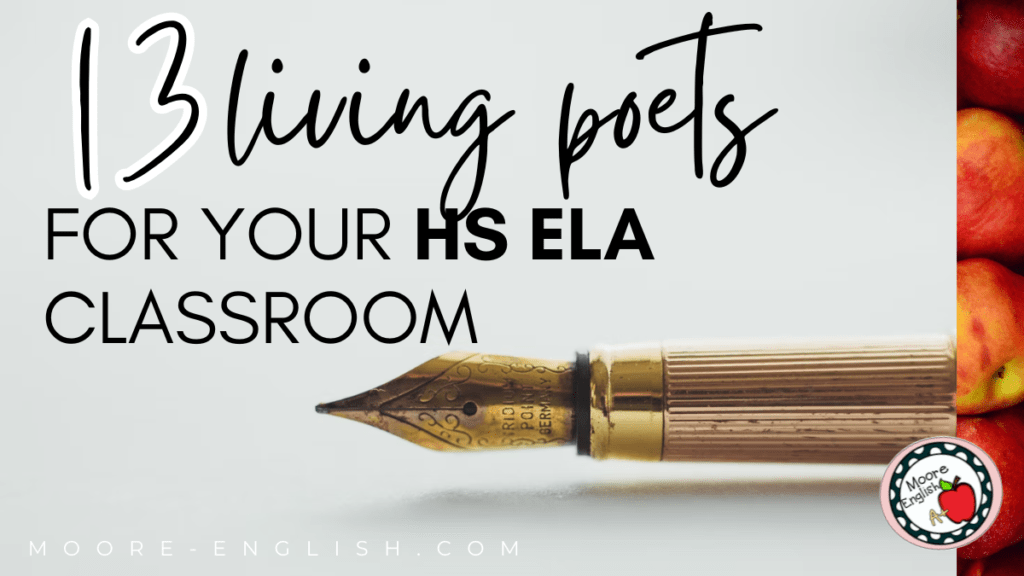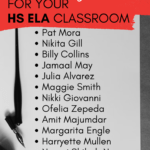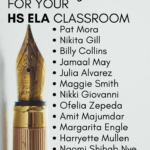Recently, I wrote about 5 classic American authors for your English classroom. While historical texts help readers understand developments in literary history, it’s an incomplete snapshot and ignores countless living poets. Literature is so much more expansive, diverse, and textured than 5 dead White authors.
For this reason, I wanted to share 13 living poets whose work also belongs in your classroom. These are the authors elevating literature and redefining the canon.
This post this post may contain affiliate links. Please read the Terms of Use.
My Favorite Living Poets
My favorite poet is Gerard Manley Hopkins. No poem catches my breath quite like “Spring and Fall: To a Young Child.” However, Hopkins died one-hundred years before I was born.
As far as living poets, few capture my imagination like Maggie Smith. I’ve written about this before, but her poetry collection Good Bones is my go-to housewarming gift. It also contains “What I Carried” and “You could never take a car to Greenland,” two poems I enjoy teaching. I also just finished Smith’s memoir, which is heartbreaking and hopeful all at once.
Of the poets on this list, Naomi Shihab Nye’s work has probably appeared in my classroom the most often. Each time I find her work anthologized in a textbook, it makes my heart happy. Oftentimes she writes about experiences my students have not shared, but they always seem to relate to her work. I suppose that is what makes her work remarkable. In particular, “Gate A-4” and “Making a Fist” are classroom favorites. Read them both here.
Amit Majumdar, like Shihab Nye, relates his experiences to students in a familiar manner. In fact, his poem “T.S.A” pairs perfectly with “Gate A-4.” However, “Dothead” is his poem that I have probably taught the most often. While the speaker’s experience is unique, students relate to the familiar setting and to the speaker’s sense of shame. Of course, they all want to have the speaker’s integrity and resilience. Read it here.
I don’t know that any list of living poets would be complete without a shoutout to Billy Collins. In college, my poetry class was full of young people who came to creative writing because of his words. In particular, his poem “Introduction to Poetry” is a fun lesson for students who think they hate poetry. Read it here.
Black Living Poets
When I wrote my initial post of classic American authors, its Whiteness was stark but not surprising. As I created this list of 13 living authors, I knew I wanted to create a list that better reflected the diversity within American literature. With that in mind, I wanted to spotlight favorite Black writers.
Of the authors on this list, Nikki Giovanni may be the most popular. My local library regularly highlights her work during National Poetry Month. I almost always teach “The Cyclops in the Ocean” alongside The Odyssey. However, the poem “Allowables” probably resonates more with me. Read it here.
Like “Allowables,” the poem “Respiration” by Jamaal May first came to my attention following the murder of George Floyd. After reading “Respiration,” I read May’s The Big Book of Exit Strategies and Hum. Very rarely do you encounter a poet whose work changes your perception of what poetry can do, but that’s been my experience with May’s work.
One thing I love about poetry is its flexibility. Poetry can convey love, capture the devastation of war, or skewer capitalism. Or at least that’s what Harryette Mullen does in “We Are Not Responsible.” There’s a small overlap in poems that satirize capitalism and are also classroom appropriate. This is a special poem in its ability to both make you laugh and cry, but I suppose that’s also what makes it effective. Read it here.
Hispanic Living Poets
In an effort to capture the diversity of American literature, I also want to highlight Hispanic poets. This part of the list came together quickly because these 3 women are such prolific writers. In fact, the first two authors in this section routinely show up on our state standardized assessments. (Surely, if the state board of education has taken note of your work, that must mean you’ve reached a certain point of ubiquity.)
First, I keep several Julia Alvarez books in my classroom library. In the Time of the Butterflies and How the Garcia Girls Lost Their Accents are always popular student choices. In terms of poetry, I really like to offer students “Three Liberties: Past, Present, Yet to Come.” As a bonus, it pairs nicely with “lady liberty” by Tato Laviera, another Hispanic poet.
Over the years, I’ve taught with a variety of textbooks. I’m not sure I’ve ever had a student textbook that didn’t feature at least one Pat Mora poem. While Mora is prolific, the two poems I’ve taught the most are “Old Love” and “Ode to Teachers.” Both poems are straightforward but layered in a way that challenges student readers. Read them both here.
Finally, Margarita Engle wrote The Lightning Dreamer, which I was first assigned in a college course about young adult and children’s literature. It’s a novel in verse that has continued to resonate with me many years later. Of the poems in this book, the one I have taught the most often is “Tula [”Books are door-shaped”].”
Women Poets
In my initial post about classic American authors, I highlighted Emily Dickinson. Admittedly, that’s the first woman I think of when considering American literature. However, there are countless living poets whose writing is also transcendent. These 3 writers have become welcome additions in my classroom.
First, Nikita Gill of social media fame is a classroom library standout. While I’ve only ever taught the poem “Helen” from Great Goddesses, my students love Fierce Fairytales; The Girl and the Goddess; and, more recently, These Are the Words. Notably, a previous student called her a “Millennial saint.”
While Gill asks readers to question their preconceived notions of feminism, Ofelia Zepeda of the Tohono O’odham Nation asks readers to interrogate their biases about Native American and Indigenous literature. For example, the poem “Deer Dance Exhibition” from Ocean Power: Poems of the Desert challenges readers to evaluate their biases, complacency, and privilege. It’s also a poem that points out performative acceptance and commodification of Native cultures.
Finally, Brenda Shaughnessy is one of the first living poets I brought into my classroom. Here poem “I Have a Time Machine” and its accompanying TED talk have become a staple in the way I introduce post-modernism. There’s a rawness to Shaughnessy’s work that resonates with readers. Read it here.













